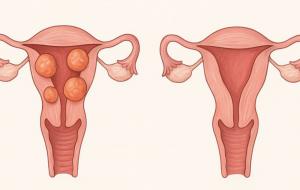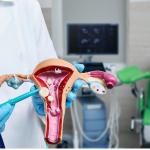
Uterine fibroids — noncancerous tumors that grow in or around the uterus — are incredibly common, especially among women of reproductive age. If you’ve had fibroids removed, it’s natural to wonder: Can fibroids come back? The answer depends largely on the type of treatment you received.
Let’s explore why fibroids may return, which treatments have the lowest recurrence rate, and how you can manage your long-term health.
Why Do Fibroids Come Back?
Fibroids are influenced by hormones — primarily estrogen and progesterone. Even after removal, your body’s hormonal environment can allow for the growth of new fibroids. Risk factors for recurrence include:
-
Younger age (especially under 40)
-
Family history of fibroids
-
Multiple or large fibroids originally
-
Incomplete treatment or removal of all fibroids
Fibroid Recurrence by Treatment Type
1. Myomectomy (Surgical Removal of Fibroids)
This procedure removes fibroids while preserving the uterus. It’s effective in the short term, but studies show that up to 60% of women may develop new fibroids within five years.
2. Hysterectomy (Removal of the Uterus)
Because it removes the uterus entirely, fibroids cannot recur. However, it is a permanent, invasive procedure that eliminates fertility and requires a longer recovery.
3. Uterine Fibroid Embolization (UFE)

UFE is a non-surgical, minimally invasive treatment that blocks blood flow to fibroids, causing them to shrink and die. UFE can treat multiple fibroids at once, regardless of their location, without the need for incisions or general anesthesia.
Lower Recurrence with UFE
Research shows UFE has a much lower recurrence rate compared to myomectomy. In fact, most women experience long-lasting relief from symptoms without regrowth, especially when UFE is performed by experienced interventional radiologists. Because it targets all fibroids at once, UFE significantly reduces the likelihood of new or regrowing fibroids needing treatment in the future.
Can Fibroids Come Back After Myomectomy?
Unfortunately, a myomectomy isn’t always a permanent solution for fibroids. Even though the procedure removes current fibroids, new fibroids can grow after you have a myomectomy. When this happens, the doctor may recommend a hysterectomy to prevent future growths.
UFE Can Be a Safer Option
Uterine fibroid embolization (UFE) is safer because it is a non-surgical procedure. Instead of removing the fibroids, the procedure involves stopping blood flow to allow the growths to shrink and die.
A fibroid specialist uses imaging to locate the uterine artery feeding the fibroid. They insert a tiny catheter into the thigh and inject embolic materials into the affected artery to block blood flow. Without the nutrients going to the fibroid, it can shrink over time, alleviating the symptoms you have been experiencing.
UFE is an outpatient procedure with less downtime than fibroid removal. Fibroid removal surgeries can take up to six or eight weeks of recovery compared to UFE, which has a recovery period of one to two weeks.
Why Ongoing Care Matters
Even after successful treatment, keeping an eye on your symptoms and scheduling regular check-ins with a fibroid specialist can help detect changes early — and keep you feeling your best.
Schedule a Consultation with USA Fibroid Centers
If you’ve been diagnosed with fibroids and a doctor has recommended fibroid removal surgery, know that you have options. USA Fibroid Centers offers a minimally invasive treatment, which can relieve the symptoms of fibroids without the risks that come from surgery. Schedule an appointment online or call at 855.615.2555 to visit one of our centers.



